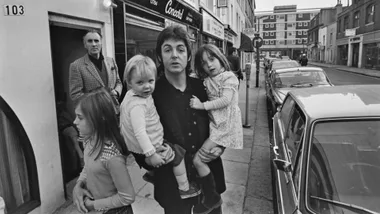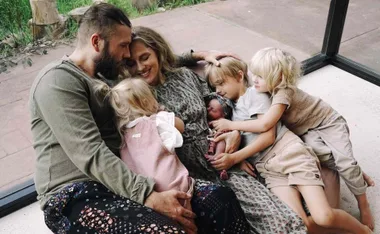We’ve all heard the horror stories of kids getting their curious hands (and mouths) on unsuitable household items, resulting in the one hospital trip every parent dreads – and most importantly, wants to avoid.
So what are the most common hidden dangers to children in the home?
The Weekly Online speaks to Dr Louis Cheung, a General Paediatrician at the Prince of Wales Hospital, to find out what household items are leaving Australian children in emergency ward.
1.Paracetamol and Iron supplements
Lock up the medicine cupboard – it’s one of the oldest rules in the parenting book. But what many parents may not know is even the over-the-counter medications (which often seem safe to leave on the kitchen table) can be detrimental if they get into the wrong hands.
While iron supplements can benefit the health of vegetarians, vegans and the iron deficient, they can also be fatal, potentially causing liver failure if consumed by young ones unnecessarily.
“Surprisingly the majority of the poisonings that we see are actually medication related,” says Dr. Chueng.
“People think that it’s relatively benign and so they’re pretty relaxed about it but if we look at [the cases] coming in paracetamol – by and far – is the most common sort of unintentional overdose in our younger kids because it’s so common in the cupboard and easily accessed. Not all the kids die from it but it is potentially dangerous.”
Paracetamol for young children is also more potent than regular paracetamol, says Dr. Chueng, as “the baby drops are quite concentrated obviously because they want to get into a small baby.”
Often the impact of these medications can be delayed, too, as they don’t have a drowsing effect, so it is difficult to notice when a child has consumed them out of sight. And iron supplements in particular are hard to extract, says Dr. Chueng, as “the body absorbs iron very well”.
So make sure they are out of reach, and clean out the medicine cupboard regularly to avoid having medications you don’t need any more being an unnecessary risk in the home.
2.Water (and not just in the swimming pool)
Whether you have a swimming pool or not, water remains an enormous safety hazard for your kids.
Drownings are the second largest cause of death in children Australia-wide, says Dr. Cheung, and this can occur in even a small pool of water.
“We have seen a few cases where the water hasn’t been of great volume.
“Even a little bucket of water in the garden for instance – probably 10 to 20 centimetres of water – and the child’s head gets stuck in there.”
So supervising your children in a shallow bath and making sure buckets around the house are in fact empty are just as important as making sure the pool gate is shut.
3.Blinds and cords
The limitless curiosity of children can be harmful in the lounge room and kitchen, with blinds in particular putting their safety at risk.
Curtain and blind cords can be a hazardous trap for kids to potentially strangle themselves with, so keep these cords out of reach.
But it’s not just the obvious cords in the home that can be a risk. Cords connected to toasters, kettles or other kitchen supplies can be dangerous, with some children ending up at the hospital after tugging them, resulting in the appliance falling off the bench, and sometimes on top of them.
So keep all appliances out of reach, says Dr. Cheung, and put them away whenever you can.
4.Batteries
Children suffocating on and ingesting small dangerous items around the house is always a worry for parents. And batteries are particularly harmful as once swallowed “they actually get digested by the stomach juices,” says Dr. Cheung, which releases the heavy metals which can cause major health problems.
“They don’t necessarily come to the parents’ attention if they swallow a battery immediately,” says Dr. Cheung.
“And then you find out afterwards. Usually by the time it’s dissolved.”
But other items around the house which may seem completely innocent, can also cause trouble in the vicinity of curious and hungry children.
Children coming into emergency have often ingested “mushy bread” and grapes says Dr Cheung, so if you’re children do have a fondness for these foods in particular, make sure they’re out of reach when you’re not supervising your kids at the dinner table.
“They’re always experimenting,” says Dr. Cheung. “That is the issue.”
5.Oven cleaner and bleach
While liquids laced with chemicals are a worry for parents, they are not often desirable to children, says Dr. Cheung, as they are unlikely to drink or consume “something that tastes disgusting”.
But if curious kids do consume or touch even a small amount of some liquids – like oven cleaner and bleach – they can cause serious harm.
“So even if they taste it and it doesn’t taste nice, they can still cause significant burns around the mouth and the nose area which is an issue for the airways,” says Dr. Cheung.
And while children arriving in hospital wards after drinking alcohol-based hand sanitiser have made headlines recently, it is not common says Dr. Cheung, as most hand sanitisers don’t taste nice. But to avoid risk, opt for hand sanitisers that aren’t flavoured.
And the paediatrician’s biggest piece of advice?
“Don’t underestimate your child. They can get into anything.”











